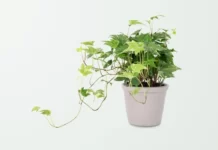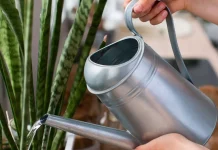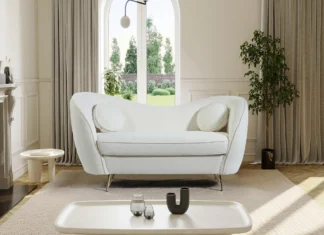If you don’t live in a space that soaks up natural light, you can expect to have a healthy collection of dead plants showing for it. The key is just to choose plants that thrive in low-light conditions. However, that doesn’t mean you must totally give up indoor plants.
Almost any room with limited natural light can benefit from low-light plants. Dark rooms are easier to lighten up with plants, but plants do not like low light conditions as much as we would like. They prefer to grow in medium to bright lighting. Out there, there are a few outlaws who just love the shade. Have you been searching for something to brighten up that dark room or shady corner? Check out our list of the best low light dark room indoor plants that you can pick for your shady room!
20 Best Indoor Plants for Dark Rooms
1. Golden Pothos

Golden pothos is often referred to as an indestructible houseplant due to its inability to be destroyed even by abuse and neglect. It can survive almost no watering, frequent moving, and inadequate light. Unless there is too much light, it can thrive with artificial light, making it a great choice for office spaces, lobby areas, and confined dorm rooms without natural light.
Our Music Plant Experiment found that Pothos are more than just common houseplants to survive and grow indoors, as they love some rock music as well.
2. ZZ Plant

Almost any type of environment will be tolerated by ZZ plants, Anderson notes. Even with standard office or household lighting, they will grow somewhat well, and their roots are similar to those of succulents, enabling them to go a long time without water.
Beginners and those who are rarely at home will benefit from having one of these plants.
You can neglect these plants and they will still thrive as long as you water them once a week. The plant can also be propagated by separating clumps or by taking leaf cuttings with some effort. Do not give ZZ plants to children or pets as they are toxic if eaten.
3. Palms
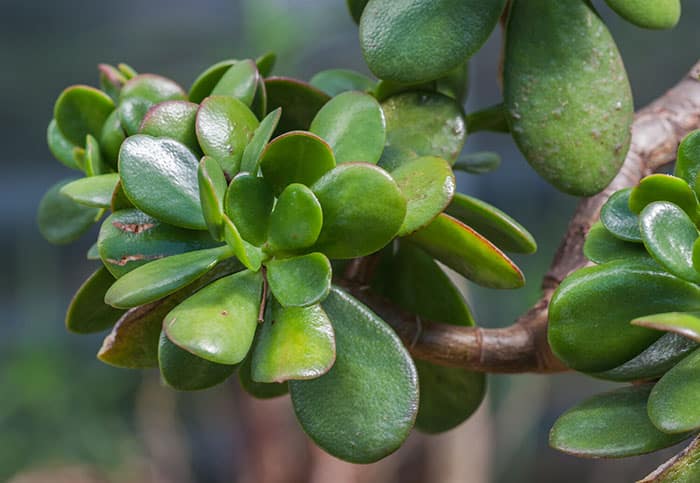
Chamaedorea Elegans, also known as the parlor palm, have been a popular ornamental plant since the Victorian era. It is a slow-growing plant that can survive in low light. Once grown to 4 feet tall, it looks amazing in any room. During the winter, it is helpful to mist the plants once in a while, but they only need water when the soil feels dry to the touch.
An extraordinary and unusual plant, the elephant’s foot palm doesn’t have the usual leaves sprouting from the base but instead has long strap-like leaves that grow from a fat base. The ponytail palm can reach heights of 6 feet indoors and is available in a wide range of heights varying from tabletop to tree size.
4. Silver Satin

Despite its low maintenance requirements, this Scindapsus pictus plant will put the right amount of flair to any interior space! Moreover, it comes in a different nursery grow pot placed inside a 5″ ceramic planter, available in five colors: black, terracotta, cream, blush, and mint.
5. Spider Plant

One more plants that do well in dark rooms is the spider plant. It is very low-maintenance but can grow in shade. Spider plants may be stunted or even blocked if exposed to light at night (including artificial lighting) after they are older than one year. There have been numerous discussions about the Spider Plant, however, remember it is one of the easiest house plants to kill and purifies the air in your room or living room (according to NASA studies), depending on which shady corner you want to adorn.
6. Snake Plant

Snake plants are not only tolerant of low light dark room indoor plants, but they are also drought-resistant – so they won’t die if you forget to water them. Despite its name, this plant gets its name from the wavy, snake-like pattern on its leaves.
Known for their toughness and resilience, snake plants can withstand neglect, Anderson says. Similar to ZZ plants, they can survive for long periods without water and do well with artificial light. One of the things that makes them so great for smaller spaces and offices is that they don’t take up too much room.
Especially in darker areas, limit the amount of water your snake plant is getting – snake plants are better suited to drought than excessive watering, so I recommend letting the soil dry out thoroughly between waterings.
7. Dieffenbachia

Dieffenbachia comes in different varieties like green, variegated, yellow, white varieties that lighten up your space and purify air. Moreover, this plant can be placed almost anywhere, as it can grow in low to moderate light as well as in direct sunlight. To prevent them from becoming too leggy, they benefit from some bright, indirect light despite growing well in indoor dark rooms. To prevent poisoning of children and pets, keep Dieffenbachia away from them.
8. Aglaonema – Chinese Evergreen

Aglaonema red has been taking over the world of houseplants over the past few years. Even dark rooms will be brightened by the lime green leaves of this houseplant, which comes in red and pink varieties as well. Asglaonema tolerates dry soil too, so it’s a perfect gift for forgetful gardeners. In its original form, Aglaonema is known as Chinese evergreen. The plant is incredibly durable for an indoor plant (it thrives in low light) and requires little care. It is one of the best plants for dark rooms for beginners since it only needs fertilizing once or twice a year.
9. Peace Lily

Among the shade-loving houseplants is this one. Dark rooms, lobbies, and offices are common places to find Peace Lilies due to their ability to grow in low light conditions. Tropical plants are great for offices and homes since they are also effective air purifiers.
In addition to purifying the air, the peace lily blooms continuously and doesn’t require any extra care. In low light, it will do just fine, but if you place it in bright indirect light, its flowers will bloom more often.
Adults who are sensitive or allergic to plants may also have problems with peace lilies, so if you choose one of our best indoor plants for dark rooms, make sure you don’t place it close to the bed.
10. Dancing Bones Cactus
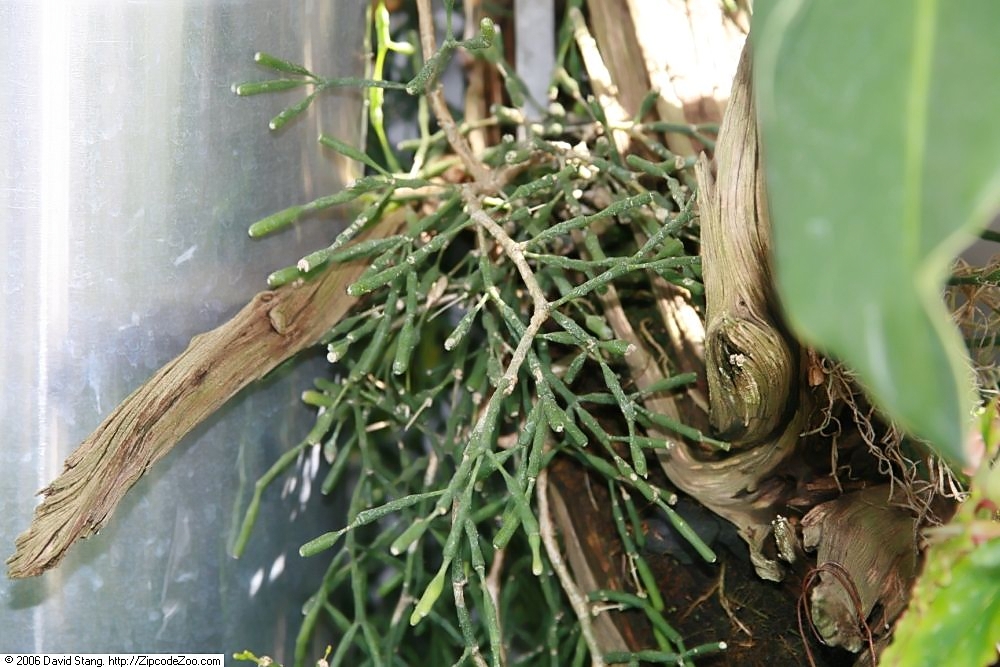
Unlike spiky cacti, jungle cacti grow on tree trunks in the wild, and do not resemble the sharply spiked cacti you might be imagining. Hatiora salicornioides forms sweet, yellow flowers when it is ready. They look like long-haired mosses. Pot when the soil is almost (but not quite) bone dry, and water once it’s almost dry (but not quite). Dance bones cactus gets its name from its spindly, sometimes floppy branches.
11. Prayer Plant
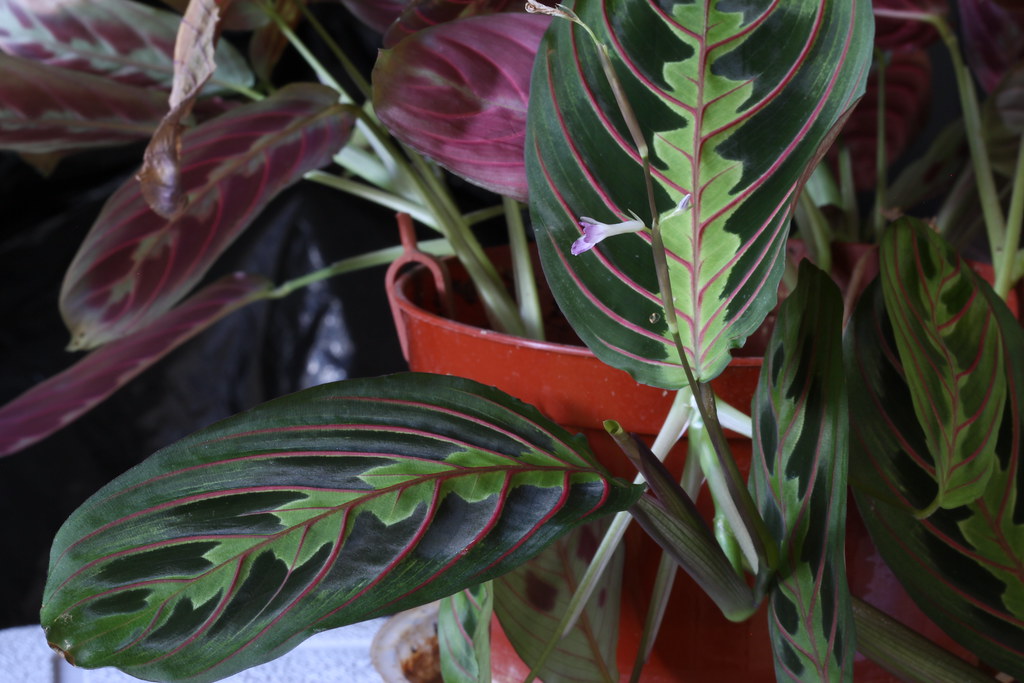
Maranta leuconeura’s cheerful foliage can lift the mood in any room. The leaves on this easy-care plant are a mix of greens and cream with red veins. Their name derives from the fact that they fold up at night. Prayer plants only grow 6-8 inches tall, so they are an ideal option for a bookshelf or end table.
Low light conditions and cold temperatures are not as tolerant of prayer plants as they are of acidic conditions. This temperature mimics their native jungle and forest habitats, so they feel at home in 65–80 degrees Fahrenheit.
12. Nerve Plant
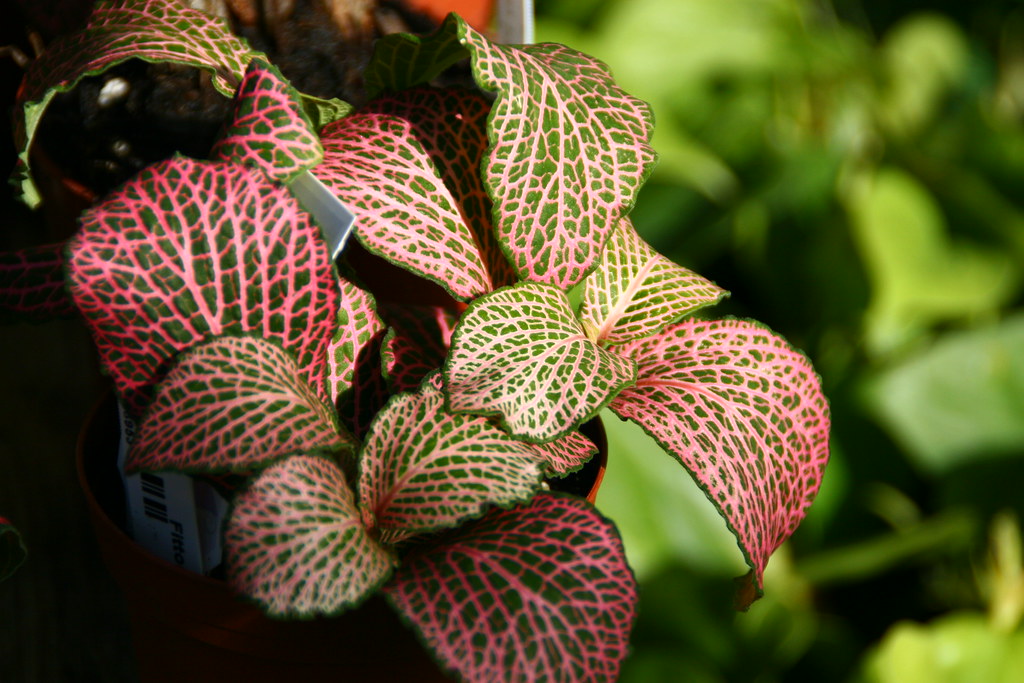
According to Costa Farms, nerve plants, or fittonia, may look a bit dull with less sunlight but can still survive in low light. They prefer brighter light, but can tolerate some low light quite well, Costa says. South American plants have highly detailed leaves that are absolutely fascinating. Plants with these patterns stand out. They can show up in red, pink, or white (pictured).
13. English Ivy
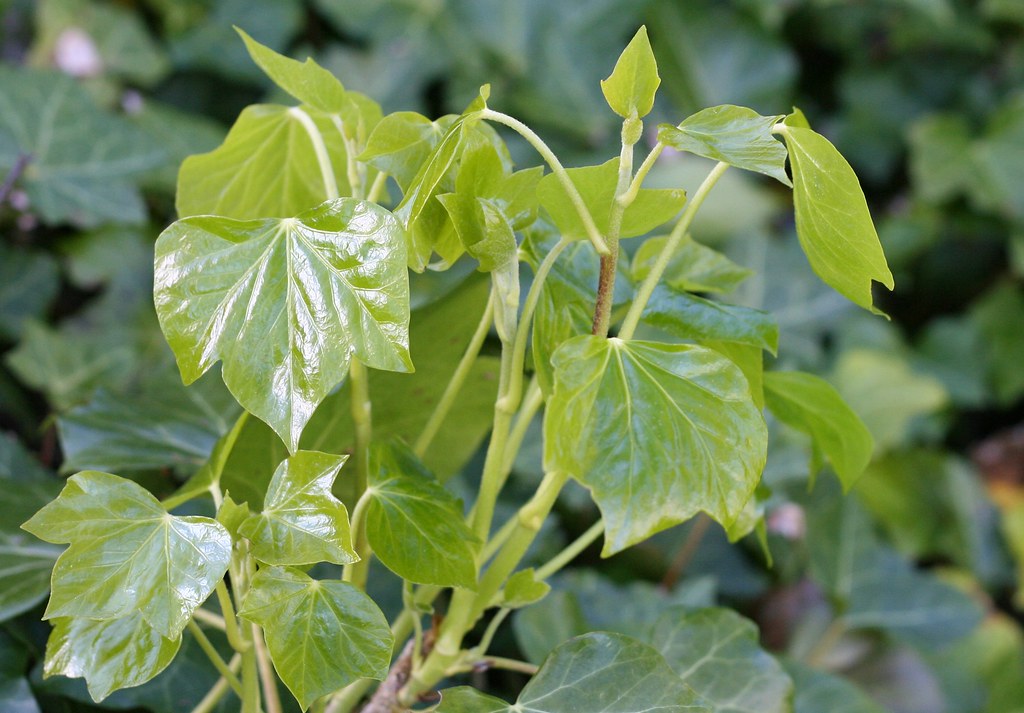
Besides thriving in lower light levels, English ivy can also be used as an air purifying plant that removes toxins, mold, and waste. Ivy with trailing foliage looks great in a hanging basket or urn, giving a dull room a lavish look. There are many different colors and shapes of leaves on English ivy, and it thrives in a low-light environment. You should mist English ivy frequently in order to prevent spider mites from getting a hold of it.
14.Dumb Cane Plant
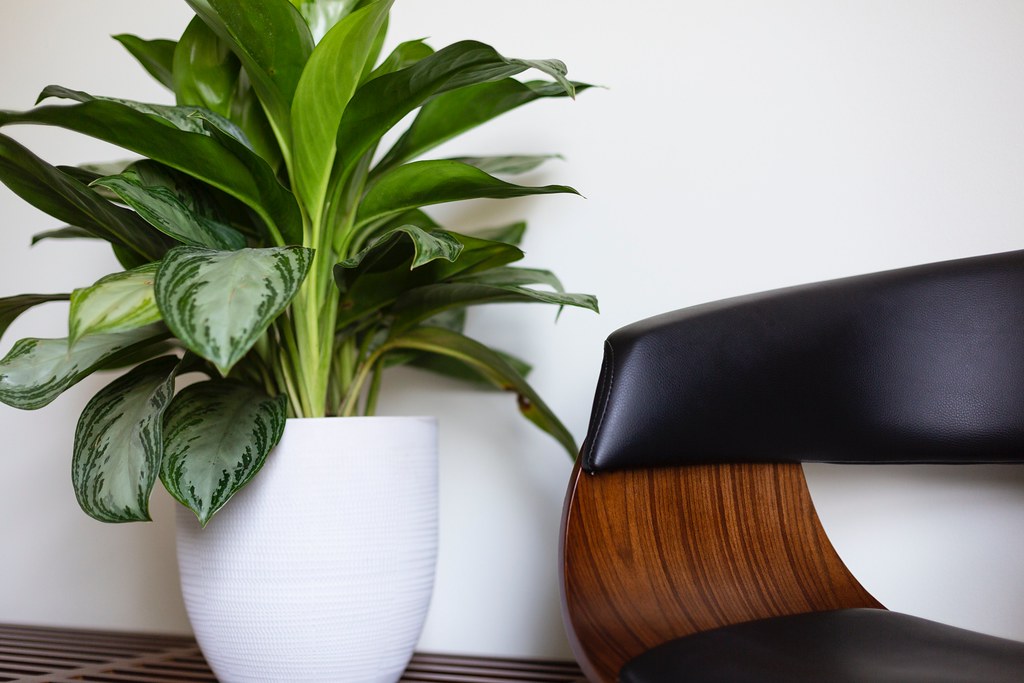
This plant prefers filtered light. The Dumb Cane plant gets its name from the fact that its sap, which is a skin irritant, may cause temporary loss of speech during the spring and summer. Use a curtain to block the sun from the plant, especially during these seasons when it is producing new, tender leaves. They can survive in any light condition.
15. Peperomia

Currently, peperomia is one of the most fashionable plants around. Known as radiator plants, this variety of plants prefers to be kept dry because its leaves hold water like succulents. Once a week, make sure the soil is completely dry before watering again. Make sure they are not in direct sunlight.
16. Heart-leaf Philodendron

Only very few plants can adapt to the conditions of indoor living as well as Philodendrons. Hanging baskets and locations with high spots are perfect for their elegant stems to hang freely. Make sure the soil is completely dry before watering again. Water once a week. Avoid direct sunlight. This plant loves humidity, so keep it moist. It will not mind low light because it is a very forgiving plant.
17. Monstera
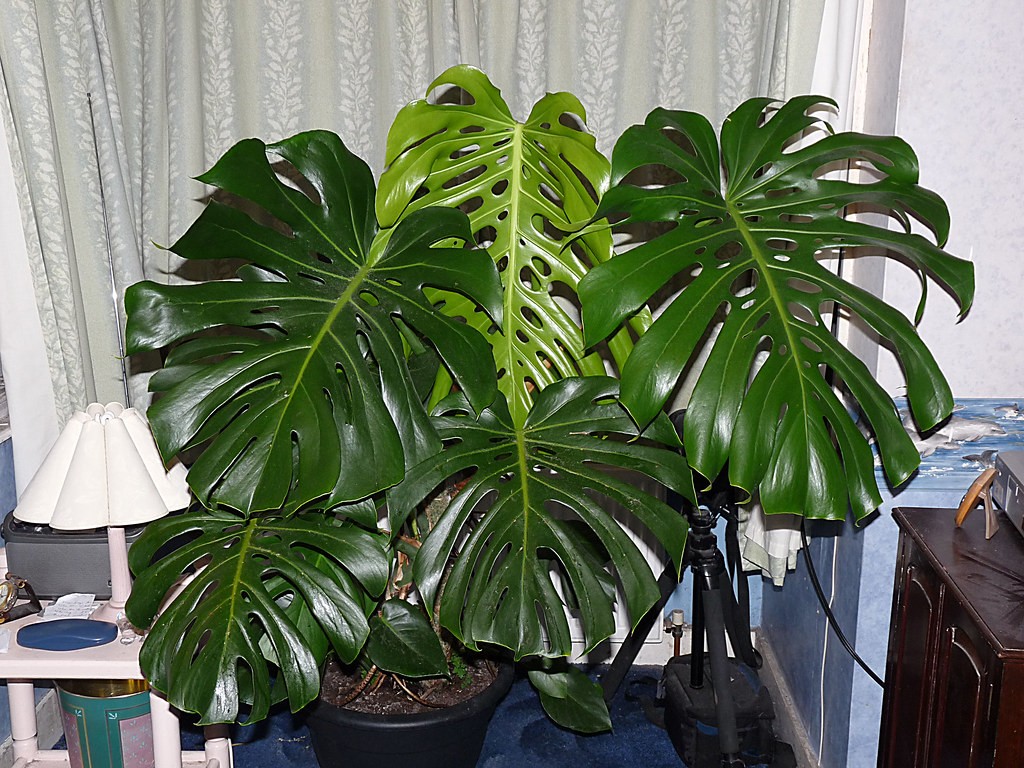
Monstera is considered one of the best plants for dark rooms. Plants in the Araceae family, or family of plants referred to as the Swiss Cheese Plant, grow in Panama. The Latin word Araceae means “abnormal.” Monstera leaves are certainly unique-in a good way. Massive leaves, perforated with holes, can grow up to two feet across in the jungle.
18. Arrowhead Vine

Adaptable to low-light conditions, arrowhead vines, Syngonium podophyllum, originate from Central America. A variety of foliage, from bright green to bronze to variegated, can be found on this handsome plant. Growing up to 4 feet high and forming a bushy mound, arrowhead vine becomes a vine as it ages, making it ideal for use as hanging baskets or to climb up a trellis. When plants become leggy, pinch them back.
19. Dracaena Limelight

It has wide, colorful leaves that are both bright and long, making it one of the best low-maintenance plants available. A great shade plant is Dracaena Lemon Lime because of its ability to tolerate shady areas well. Regardless, this type of dracaena doesn’t mind low light conditions, the plant won’t thrive in full shade, so don’t expect it to thrive there. Avoid placing it in complete darkness or full sunlight.
20. Rex Begonia

To thrive, Rex begonias don’t need direct sunlight and it’s also one of the good plants for dark rooms. It is an attractive plant with a variety of foliage. However, overwatering is its Achilles’ heel. The leaves of these can survive in less light while they are brighter and more colorful when exposed to direct, bright light.
Conclusion
Is it really that difficult to find a beautiful plant for low lighting conditions? Most of the plants featured on our best indoor plants for dark rooms list are also highly low maintenance, so they are suitable for even the most inexperienced gardeners. Are there any plants you think should be added to our list of shade-loving plants? Please let us know in the comments below!


